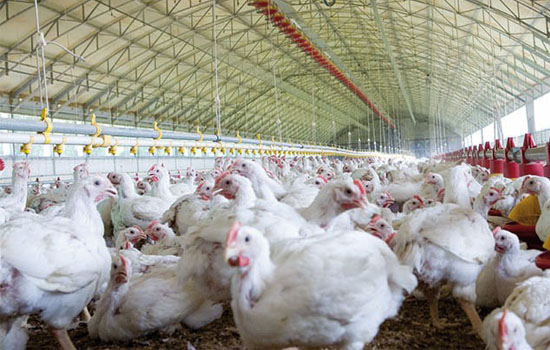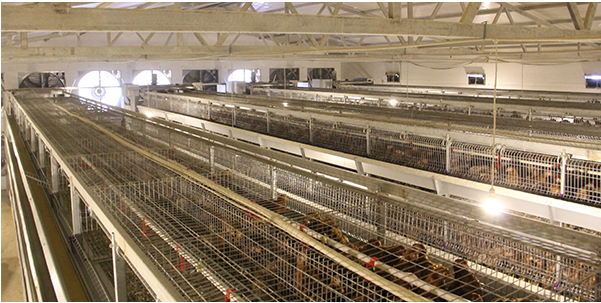What kinds of minerals do chickens need when laying chickens in laying cages?
- Published in Chicken cages
When laying chickens in laying hen cages, the mineral elements in the chicken body are about 4%, most of which are present in bones and teeth. The mineral content of eggs is 1.7%, and most of them are concentrated in eggshells. There are many types of mineral elements, but there are 14 main types commonly used in chicken production. Among them, 7 kinds of calcium, phosphorus, sulfur, magnesium, chlorine, potassium, and sodium are used as constant elements. Iron, copper, manganese, zinc, iodine, selenium, and diamond are used in small amounts and are called trace elements.
In the past, the breeding of chickens was mostly free-range. The outside soil is rich in mineral elements, and chickens can eat freely. At present, the chicken industry has gradually developed into large-scale intensive breeding. In the breeding process of laying chicken cages, it is often found that the deficiency occurs due to the lack of a certain substance, so more and more mineral elements are paid attention to and applied by people.

Among these elements, chickens need the most calcium and phosphorus. The main role of calcium and phosphorus is to form bones, teeth, and eggshells. Calcium is necessary for blood clotting and normal heart function with sodium and potassium. Chicks suffer from chondrosis when calcium is deficient; eggshells become thinner when the calcium is deficient, egg production decreases, and even shellless eggs appear. Phosphorus is involved in carbohydrate and fat metabolism and maintains the body's acid-base balance. When phosphorus is deficient, the chicken's appetite decreases, growth is slow, and in severe cases the joints are hardened and the bones are brittle. Sodium can keep the digestive juice of the chicken alkaline, and help digestive enzymes. The vertical effect is to maintain the acidity of gastric juice. When salt is lacking, chickens will have anal pecking, blood feeding and other ills. The body weight and egg weight of laying hens are reduced, and the egg production rate is reduced. Manganese is related to the growth of bones and the reproduction of chickens. When manganese is insufficient, the bones of chicks are dysplasia, prone to flexion leg disease, and growth is hindered; the lack of manganese in adult chickens results in low egg production and hatchability and thin egg shells. The content of zinc in chicken is very small, but it is widely distributed. Bone, hair, liver, pancreas, kidney, muscle and enzymes all contain zinc.
Chickens grow slowly when they are deficient in zinc, and have poorly developed feathers and skin. In severe cases, their feet are short, and the surface is scaly and dermatitis. Iron is present in hemoglobin and certain oxidases in tissue cells. When iron is insufficient, anemia is prone to occur. Copper and iron are involved in the formation of hemoglobin. When the feed is deficient in copper, iron is poorly absorbed and anemia also occurs. Iodine is related to thyroid function activity, when iodine deficiency can cause goiter. Selenium can treat chicken exudative quality disease, pancreatic degeneration and muscular stomach and myocardial dystrophy in turkey. The United States and Canada generally recommend adding selenium to chick diets.
In addition to the above several elements, laying hen cage manufacturers believe that the remaining constant and trace elements are not easy to be lacked in chicken diets.


